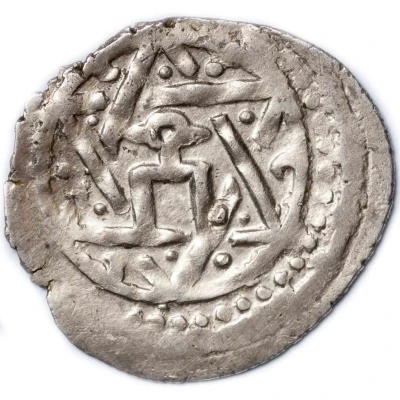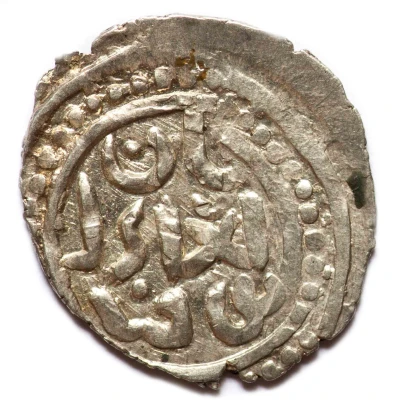


© Grinya (CC BY-NC-SA)
Yarmaq - Toqta Qrim
690 (1291) year| Silver | 1.2 g | 18 mm |
| Issuer | Golden Horde |
|---|---|
| Khan | Toqta (1291-1312) |
| Type | Standard circulation coin |
| Year | 690 (1291) |
| Calendar | Islamic (Hijri) |
| Value | 1 Dirham / Dang / Yarmag (0.7) |
| Currency | Dinar (1227-1502) |
| Composition | Silver |
| Weight | 1.2 g |
| Diameter | 18 mm |
| Shape | Round (irregular) |
| Technique | Hammered |
| Orientation | Variable alignment ↺ |
| Demonetized | Yes |
| Updated | 2024-10-06 |
| Numista | N#143867 |
|---|---|
| Rarity index | 90% |
Reverse
Batu Khan's tamgha (imperial seal of the House of Batu) in the centre. Arabic inscription around. Date below
Translation:
Minted in
Qrim
69[0]
Comment
Toqta (Tokhta, Tokhtai, Tochtu or Tokhtogha) (1270—1312/13) was a khan of the Golden Horde, son of Mengu-Timur and great grandson of Batu Khan. He was a khan of the Golden Horde in 1291—1312. His name "Tokhtokh" means "hold/holding" in the Mongolian language.
Interesting fact
One interesting fact about the Yarmaq - Toqta (Qrim) 690 (1291) coin from the Golden Horde is that it features a unique blend of Islamic and Mongolian influences in its design. The coin's obverse side features a stylized representation of the Mongolian emblem, the "soyombo," which is a symbol of the Mongolian nation and consists of a pair of golden wings, a crown, and a pair of horns. The reverse side of the coin features a stylized representation of a mosque, indicating the Islamic influence on the Golden Horde's culture and religion. This blend of cultures is a reflection of the diverse and multicultural nature of the Golden Horde's society during the 13th century.



